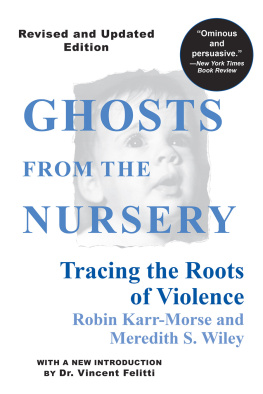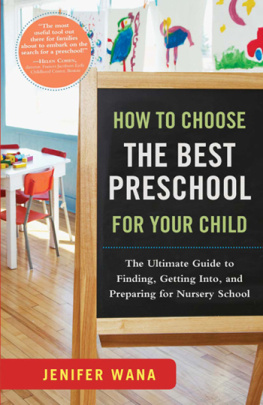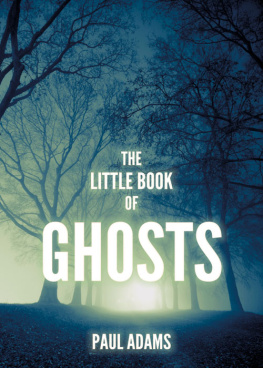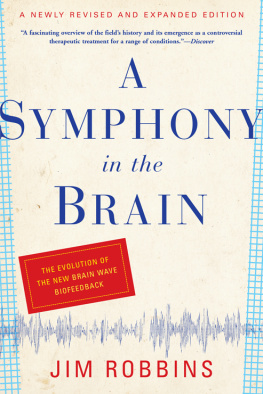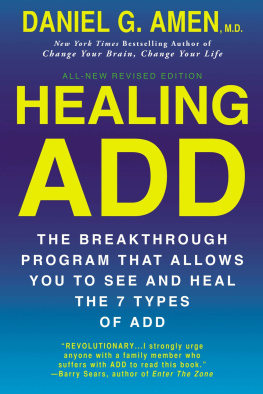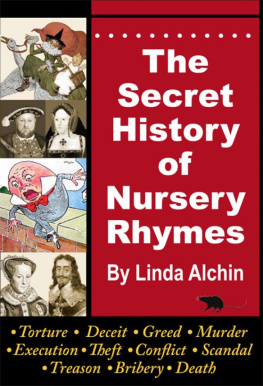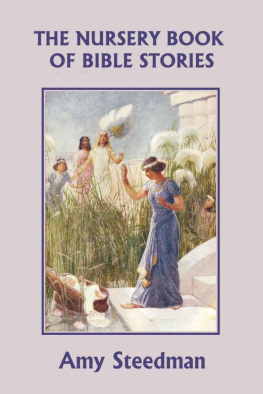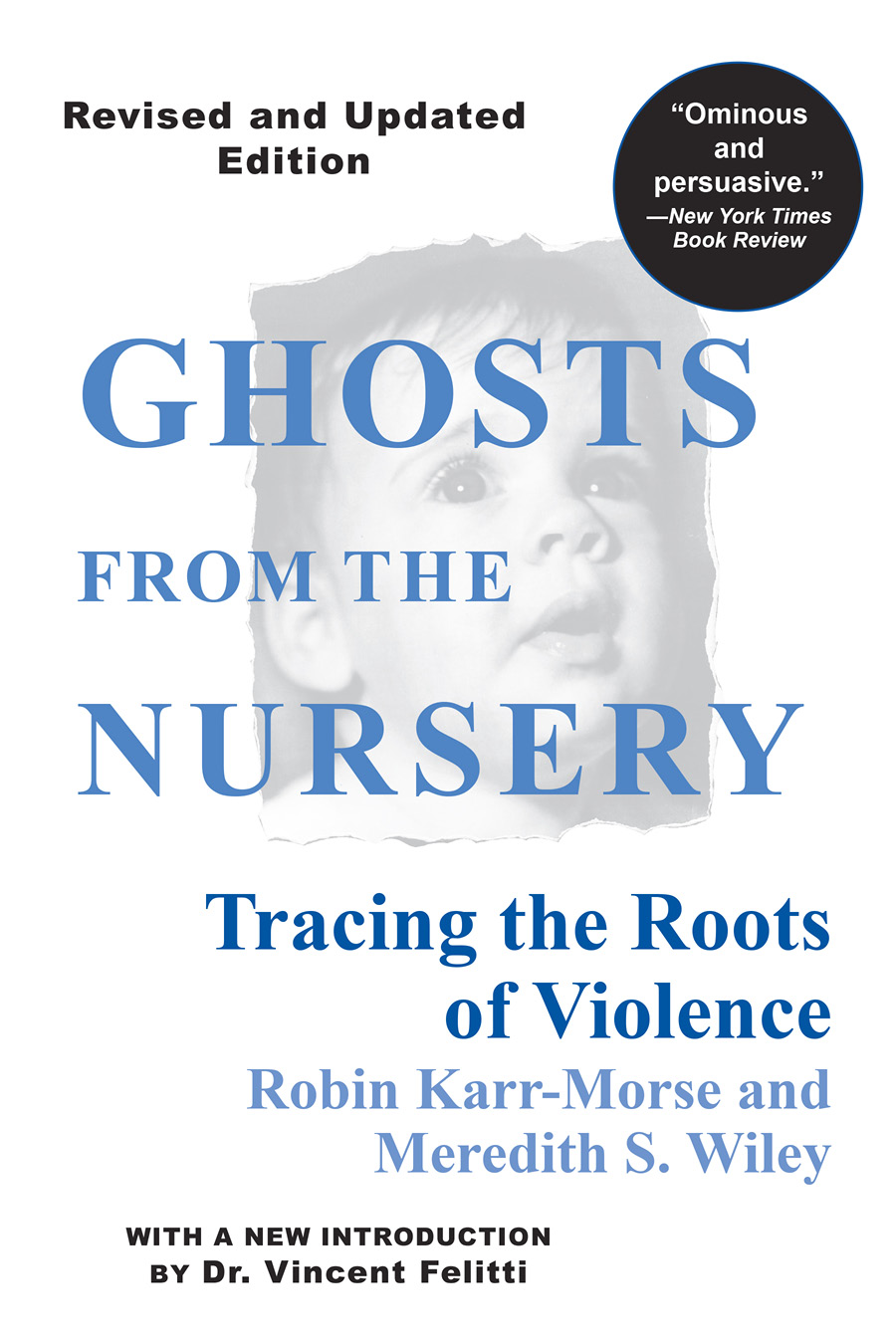
Ghosts from
the Nursery
Ghosts from
the Nursery
T R ACING
THE ROOTS OF
VIOLENCE
REVISED AND UPDATED EDITION
Robin Karr-Morse and Meredith S. Wiley

The Atlantic Monthly Press
New York
Copyright 2013 by Robin Karr-Morse and Meredith S. Wiley
All rights reserved. No part of this book may be reproduced in any form or by any electronic or mechanical means, including information storage and retrieval systems, without permission in writing from the publisher, except by a reviewer, who may quote brief passages in a review. Scanning, uploading, and electronic distribution of this book or the facilitation of such without the permission of the publisher is prohibited. Please purchase only authorized electronic editions, and do not participate in or encourage electronic piracy of copyrighted materials. Your support of the authors rights is appreciated. Any member of educational institutions wishing to photocopy part or all of the work for classroom use, or anthology, should send inquiries to Grove/Atlantic, Inc., 154 West 14th Street, New York, NY 10011 or .
Published simultaneously in Canada
Printed in the United States of America
Library of Congress Cataloging-in-Publication Data
Karr-Morse, Robin
Ghosts from the nursery : tracing the roots of violence / Robin Karr-Morse and
Meredith S. Wiley.
p. cm.
Includes bibliographical references and index.
ISBN: 978-0-87113-734-0
1. Violence in childrenUnited States. 2. Problem childrenUnited States. 3. Socially handicapped childrenUnited States. 4. InfantsUnited StatesDevelopment. 5. Child psychopathologyUnited States. 6. Juvenile delinquencyUnited States. 7. Violent crimesUnited States. I. Wiley, Meredith S. II. Title.
HQ784.V55K37 1997
618.9289dc21 97-15096
eBook ISBN: 978-0-8021-9633-0
Photograph opposite title page copyright by Robin Karr-Morse
Page 397 is an extension of the copyright page.
Design by Laura Hammond Hough
Atlantic Monthly Press
an imprint of Grove/Atlantic, Inc.
154 West 14th Street
New York, NY 10011
Distributed by Publishers Group West
www.groveatlantic.com
To the people who continue to teach us the most:
Erin, Cameron, Jason, Jordan, Gretchen, Bill,
and
Caroline and to a sweet little boy named Kent
Contents
FACTORS ASSOCIATED WITH VIOLENT BEHAVIOR THATCAN BE MODIFIED OR PREVENTED BY EARLY INTERVENTION
MYTHS ABOUT THE HUMAN BRAIN
BEHAVIORAL EFFECTS FOLLOWING PRENATAL DRUG EXPOSURE
JEFFREY TODAY
PRIMARY PREVENTION: A CONTINUUM OF PROGRAMS THAT WORK
RESOURCES
Preface
Ghosts from the nursery is an alteration of a phrase coined by psychoanalyst Selma Fraiberg: ghosts in the nursery. Fraiberg used this phrase to refer to the tendency of parents to bring to the rearing of their children the unresolved issues of their own childhoods. Ghosts from the nursery is used to express the idea that murderers and other violent criminals, who were once infants in our communities, are always accompanied by the spirits of the babies they once were together with the forces that killed their promise. The metaphor has connected for thousands of readers since Ghosts from the Nursery was first published in 1997, as Americans searched among relatively superficial explanations of the roots of violence in our nation and across the world.
When Ghosts from the Nursery was first made available to the public, the spate of school shootings across the United States had barely begun. At the time we thought that the first of thesethe killing of two students and one teacher by a fourteen-year-old in Moses Lake, Washingtonhad been an anomaly. The second school shooting did not occur until almost a year later, in February 1997, when a sixteen-year-old shot his principal and one student at his school in Bethel, Alaska. But just as the manuscript for Ghosts was going to press in 1997 we began to see evidence of a frightening trend: In October, two students were killed and seven were wounded by sixteen-year-old Luke Woodham in Pearl, Mississippi, and in December, three students were killed and five wounded by a fourteen-year-old in Paducah, Kentucky. As the year ended, another shooting took place in Stamps, Arkansas, when a fourteen-year-old hid in the woods to ambush two students in the school parking lot.
In 1998, the pattern escalated again. In March of that year, one teacher and four students were killed and ten others wounded outside their middle school as a thirteen-year-old and an eleven-year-old student shot their classmates while they stood outside their school in response to a false fire alarm. A second middle school shooting took place the following month in Edinboro, Pennsylvania, when a fourteen-year-old shot a teacher and two students at a school dance. Three additional high school shootings followed that spring in Fayetteville, Tennessee; Richmond, Virginia; and Springfield, Oregon. This latter event had a huge impact on those living in Oregon. The fifteen-year-old shooter, Kip Kinkel, was the son of two respected teachers. On the previous day in May, Kip had been suspended and sent home for bringing a gun to school. Kip rose the next morning and shot each of his parents, then went to Thurston High School where he opened fire on his schoolmates in the cafeteria, killing two students and wounding twenty-two others.
In 1999, one middle school shooting occurred in Deming, New Mexico, and three high school shootings occurred in Georgia, Oklahoma, and, the deadliest thus far, Littleton, Colorado. At Columbine High School, one teacher and fourteen students were killed and twenty-three students were wounded in a well-planned and meticulously rehearsed massacre by two adolescent boys who, like Kip Kinkel, were from middle-class families. Videos documented that the boys had spent hours in the woods near their homes staging the massacre over the course of several months.
Following Columbine, as the new millennium unfolded, Americans have lived through more than thirty school shootings. Few of these have received extensive coverage in the media. But 2012 culminated in a new level of horror. The pre-Christmas massacre of twenty six- and seven-year-olds and six staff in their grade school classrooms at Sandy Hook Elementary School in Newton, Connecticut, stirred us from a decade of ennui regarding violence among our children.
Until Newtown, this millenniums discussion of violence in America was focused on concerns outside our countrywar in Iraq or Afghanistan. But the slaughter of young children on our own turf generated an unprecedented level of anxiety. If we cant protect our childrenthe most vulnerable among uswho are we?
We have known for a long time that the confluence of madmen and guns is disastrous. Following each of the major school shootings across the nation, the conversation about firearms and mental instability has filled the media to the point that strangers passing in a grocery store exchange informal remarks on gun control as if they had all just exited a lecture on the topic. Harder to talk about is the madmen side of the equation. But this is where the real conversation needs to take place.
Gun control is a critical issue, and we need to do all we can to employ adequate background checks in order to keep firearms out of the hands of children and emotionally unstable adults. But the common denominator we continue to overlook in these events is the pervasive question of why and the central role of the human brain in the equation. How and why can a baby develop into a vicious killer? And what can we do about it?
Next page
